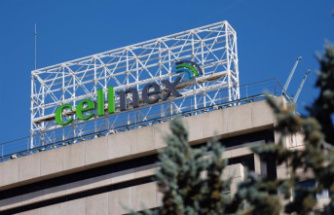One of the intriguing subplots to the movie “La La Land,” a wonderful homage to the great Hollywood musicals of the post-World War II era that was nominated this year for 14 Academy Awards, was the tension in the discussion between Sebastian, who sees jazz music as a pure form rooted in the past, and his one-time roommate, Keith, who thinks jazz will die if it doesn’t move into the future.
That’s a dilemma with which classical music has wrestled throughout much of its existence, but perhaps no more so than in the last half century. As is the case with Sebastian, there are those who glory solely in the great masterworks of the past — from Bach to Mozart, Beethoven, Brahms and Tchaikovsky — while others revel almost exclusively in those works fresh off the printed page (or IPad screen). Moreover, of course, last century’s new music has increasingly found its way into the pantheon of classical music’s “greatest” works.
While most artistic organizations gravitate to one pole or the other, a few, such as the Los Angeles Philharmonic, are able to straddle both ends of the divide. Saturday’s concert in Ambassador Auditorium by the Pasadena Symphony will particularly please those who love music from the so-called Romantic era — the late 19th and early 20th centuries — because Music Director David Lockington will lead the orchestra in Tchaikovsky’s Symphony No. 6 and Rachmaninoff’s Piano Concerto No. 2, with Natasha Paremski as the concerto soloist.
Both works are big, bold, heart-on-the-sleeve compositions and both are works from composers in the midst of internal struggles.
Tchaikovsky’s so-called “Pathetique” symphony, or as Lockington prefers to call it the “Pathos” symphony, was the composer’s final completed work, finished on Oct. 28, 1893, just nine days before the composer died.
Tchaikovsky wrote to his brother as the work was being completed: “I am now wholly occupied with the new work ... and it is hard for me to tear myself away from it. I believe it comes into being as the best of my works.”
Although it is now one of his most-loved works, initial critical reactions were not all that kind, perhaps in part because of the piece’s unusual construction with its bombastic third movement followed immediately by the short, lachrymose finale.
Rachmaninoff’s second piano concerto also came at a crucial point in his life. His first symphony in 1897 had been so poorly received that Rachmaninoff suffered a severe bout of depression for which he underwent hypnosis therapy. The composer finally resumed writing in 1901 and the result, the Concerto No. 2, became one of his most famous works.
The 27-year-old Paremski was born in Moscow, moved to the U.S. at age 8, and became a U.S. citizen shortly thereafter. She was awarded a Gilmore Young Artists prize in 2006 at the age of 18, and won several competitions thereafter. She and Lockington have collaborated several times.
Paremski, who has been playing this concerto for 15 years, says “The music is so incredibly complex with its rich harmonies and polyphony that you never stop peeling the layers. Each artist finds his or her own truth in [the] concerto. Rachmaninoff gives many instructions in the score and it is very much like putting together a puzzle. My interpretation is my truth.”
Robert D. Thomas is a freelance music writer. Send him an email at BobTatFORE@aol.com. More of his reviews can be found at www.insidesocal.com/classact/
Our editors found this article on this site using Google and regenerated it for our readers.













